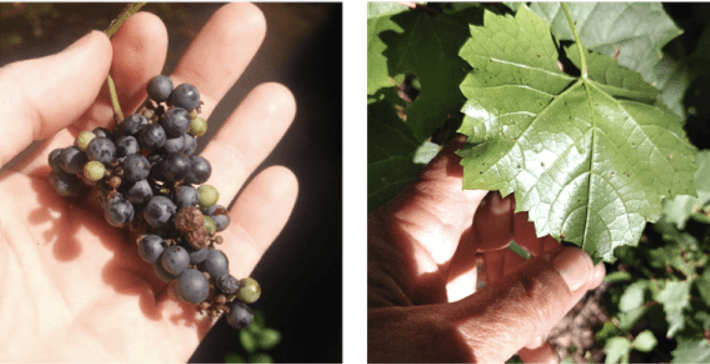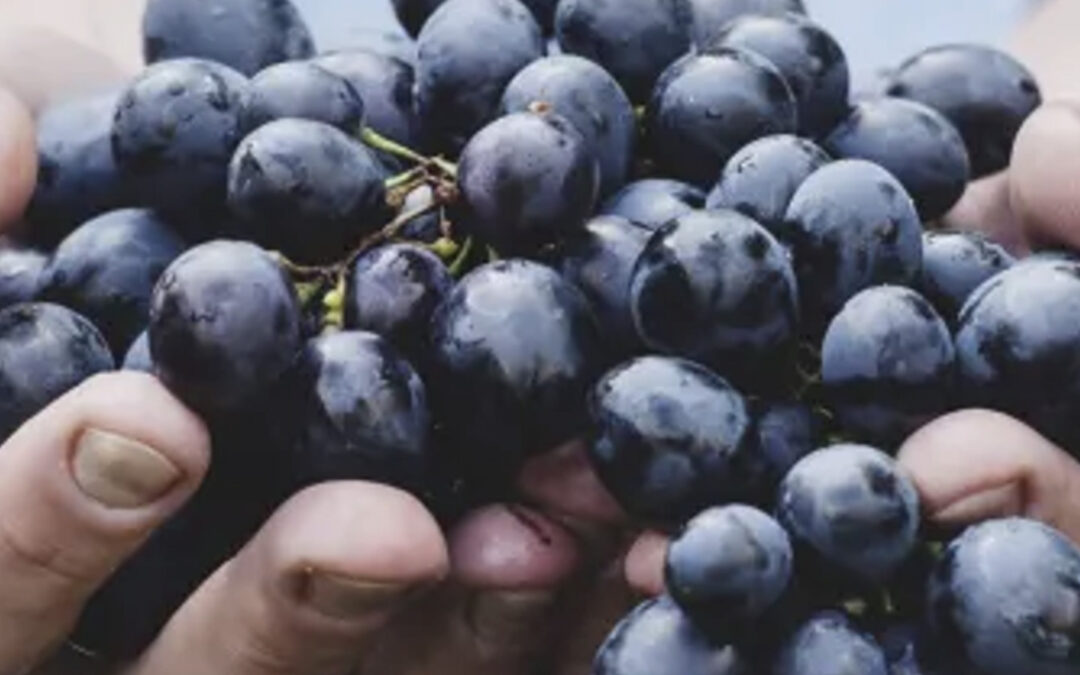Written by Russ Kane
Why Are Our Native Grapes So Important?
In the wild, grapes can hang on the vine between June and October, and some remain on the vine into winter. This energy rich food is full of moisture and sugar. Native grapes of the European varieties are consumed by both wildlife and humans. The grapes’ juice provides a refreshing drink, can be fermented to make wine or used to make delectable jellies and jams. However, the taste of native grapes vary from what you might expect from most European wine grapes. Some native varieties like Muscadine have been described as an acquired taste, similarly to how one would speak about scotch whiskey.
Naturally, wild grapevines are valuable as sources of both cover and food for wildlife. Insects are attracted to their flowers, leaves and ripe, sugary grapes. Insects that feed on the foliage and are attracted to grapes are particularly good protein sources for birds and their young.
What are Texas’ Native Grape Varieties?
Due to Texas’ size and varied habitats, there are 13 native grape species and 100 named varieties of wild grapes in Texas, more than any other state. Today, we will focus only on a few that are considered important and related to wine production.

Mustang Grapes – Photo Credit: Sharon Raine
Vitis mustangensis – The Mustang Grape. The area of its growth covers many parts central, north and east Texas growing along rivers, creeks and roadways. Mustang grapes are small and dark-skinned and are found in bunches from three to 12 grapes. Mustang is a vigorous, high-climbing, long-running and hearty species; old vines have been found more than 50’ long and a foot in diameter. In the 1800s, this is the grape was used to make wine by European settlers in Texas. It was what they harvested to make wine after the European vinifera grapevine cuttings they brought with them died.

Vitis berlandieri (Winter) Grapes – Photo Credit: VintageTexas.com
Vitis berlandieri – The Winter Grape. This grape species has a special ability to thrive in calcareous (high pH) soils in well-drained sites in central and west Texas. It grows in limestone hills and creek bottoms. It has small bunches of dark-skin grapes which are not very efficient for wine production, and its leaves can vary from cordate to ovate with narrow-to-broad sinuses. This grape is an aggressive climber and ripens fruit in the fall. However, it gained its name “Winter Grape” since the grapes can hang until a winter freeze comes when they become sweeter. This was on top of Texas grape horticulturalist T.V. Munson’s list of grapes to use as rootstock in the late 1800s to solve the Phylloxera infestation in European vineyards. As a result of T.V. Munson’s work in the 1800s, several Texas native grape species are still used in hybridized rootstocks used in vineyards worldwide.
Texas native grapes are now making European Vitis vinifera wine grapes resistant to another major vineyard disease – Pierce’s Disease (Xylella fastidiosa) spread by flying insects. Pierce’s Disease (PD) is common in southern states like Texas and is a growing problem in California. The boundary for PD in California vineyards moves northward with global warming into high value vineyard properties of Napa Valley and Sonoma County. Vitis arizonica, another native grape variety found in Texas, New Mexico and Arizona has a unique “single gene” resistance to PD. It was shown that this gene can be transferred if V. arizonica was crossed with V. vinifera. Andy Walker, Ph.D. and his researchers at U.C. Davis in California inserted this gene into V. vinifera grapes using natural crossbreeding and confirmational genetic testing, not artificial gene editing. What are now being called the “Walker Varieties” are new varieties of wine grapes with 95-97% V. vinifera and 3-5% V. arizonica. They are PD resistant and, just as importantly, make good wine.

Vitis aestivalis – The Summer Grape. This grape covers a large area from Canada to Texas to Florida to Maine and prefers a drier, upland habitat. Vitis aestivalis is a vigorous climbing vine growing into nearby shrubs and trees with grapes ripening from mid- to late-summer . The small-to-moderate size grapes are found in bunches. It is the official grape of Missouri, and its interspecies-hybrids include the wine-producing grape species of Norton and have genetic linkage to Black Spanish (Lenior) and Blanc Du Bois grapes used in Texas for making wine.
Native Texan grapes are important not only for us and our wildlife, but for the sustainability of the global vineyards and wine industry through the hybrid rootstock varies in use today. We Texans know them, grow them and cherish their worldwide legacy. You should, too.
Dr. Russell Kane is a researcher, wine writer, book author and blogger with articles and tasting notes that have appeared in local, regional and national publications over the past 20 years. Russ’s bestselling book, The Wineslinger Chronicles: Texas on the Vine, was released in 2012. He has also published a pictorial history and trail guide of the Texas Hill Country Wineries. His blog, VintageTexas.com, is the longest running blog commentary on the Texas Wine Industry.
About the Houston Livestock Show and Rodeo
The Houston Livestock Show and Rodeo promotes agriculture by hosting an annual, family-friendly experience that educates and entertains the public, supports Texas youth, showcases Western heritage, and provides year-round educational support within the community. Since its beginning in 1932, the Rodeo has committed more than $575 million to the youth of Texas and education. The 2024 Rodeo is scheduled for Feb. 27 – March 17. The 2024 World’s Championship Bar-B-Que Contest, presented by Cotton Holdings, is scheduled for Feb. 22 – 24. For more information, visit rodeohouston.com and follow @RODEOHOUSTON online via Facebook, Twitter, Instagram and YouTube for all the latest news.


